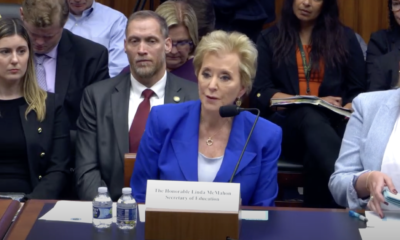Featured
Inside the Hidden Murder House of Maricopa

A chilling investigation reveals the dark mystery behind a Maricopa homicide, shedding light on the events that horrified the local community. In a town grappling with silence, the only survivor of the terrifying incident is the alleged killer, now believed to live under an assumed identity abroad.
The tragic narrative began on April 1, 2021, when the lifeless body of María de Lourdes Moya Jasso, 52, was discovered in a shocking scene at a home on Whirly Bird Road. Reports indicate that she was due to celebrate her 53rd birthday but instead became a crime statistic, a victim of a violent act that went unnoticed for far too long.
Worried about her well-being, relatives reached out to the Pinal County Sheriff’s Office a day after she was last seen. By then, authorities were unable to locate her husband, Antonio Flores-Perez, who is now the prime suspect in the case. His abrupt disappearance raised suspicions, leading investigators to speculate that he may have fled to Mexico.
The investigation revealed inconsistencies in their marital status, with no records found. While Moya had deep ties to the region, having lived there for decades, Flores-Perez remains an enigma, a ghost vanished from the public record.
Pinal County officials launched extensive searches following the discovery of Moya’s body, but all leads regarding Flores-Perez have run cold. His case was entered into national databases, marking him as missing and endangered.
The forensic examination of Moya’s remains painted a disturbing picture. Reports showed she suffered a gunshot wound to the face, with a bullet lodged in her brain. Toxicology tests revealed high levels of various substances in her system. The cocktail included methamphetamine, cocaine, and Xanax, sparking questions about the circumstances leading to her death.
Local neighbor Ruth Eunice Encinas expressed her disbelief over the lack of media coverage surrounding the incident, hinting at racial biases in reporting. Encinas echoed concerns about broader issues, questioning why a case involving individuals of Hispanic descent would garner less attention from news outlets.
Encinas also recounted chilling past events surrounding the home, including another unsolved shooting incident that involved the previous occupants. This raises alarming questions about safety in the area and whether systemic issues within law enforcement are at play.
Maricopa, while not facing a surge in murders, appears to struggle with solving them. Recent cases have gone unresolved, leaving families without answers. The recent murder of Crystal Uptain parallels Moya’s case disturbingly closely, highlighting ongoing concerns about law enforcement’s ability to provide justice.
The story serves as a wake-up call to the community and raises unsettling questions about accountability, bias, and the invisible tragedies that may lurk just beneath the surface of everyday life.


















